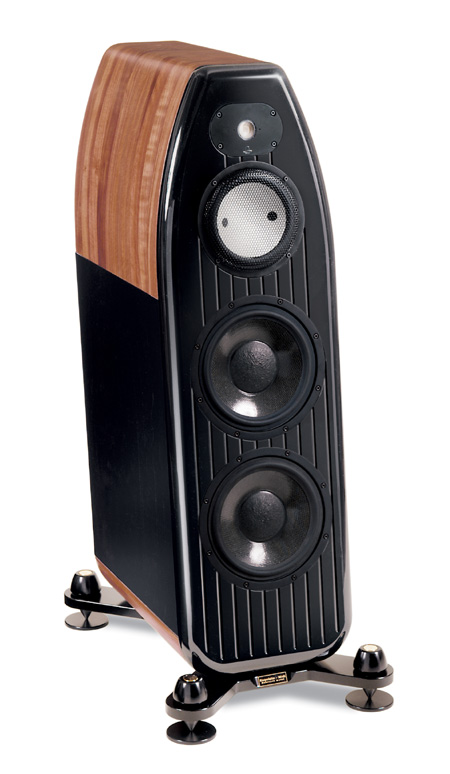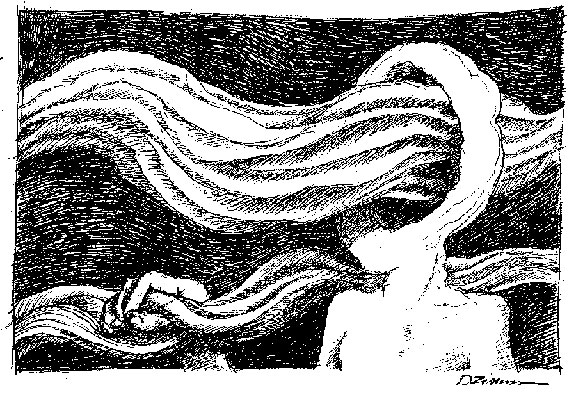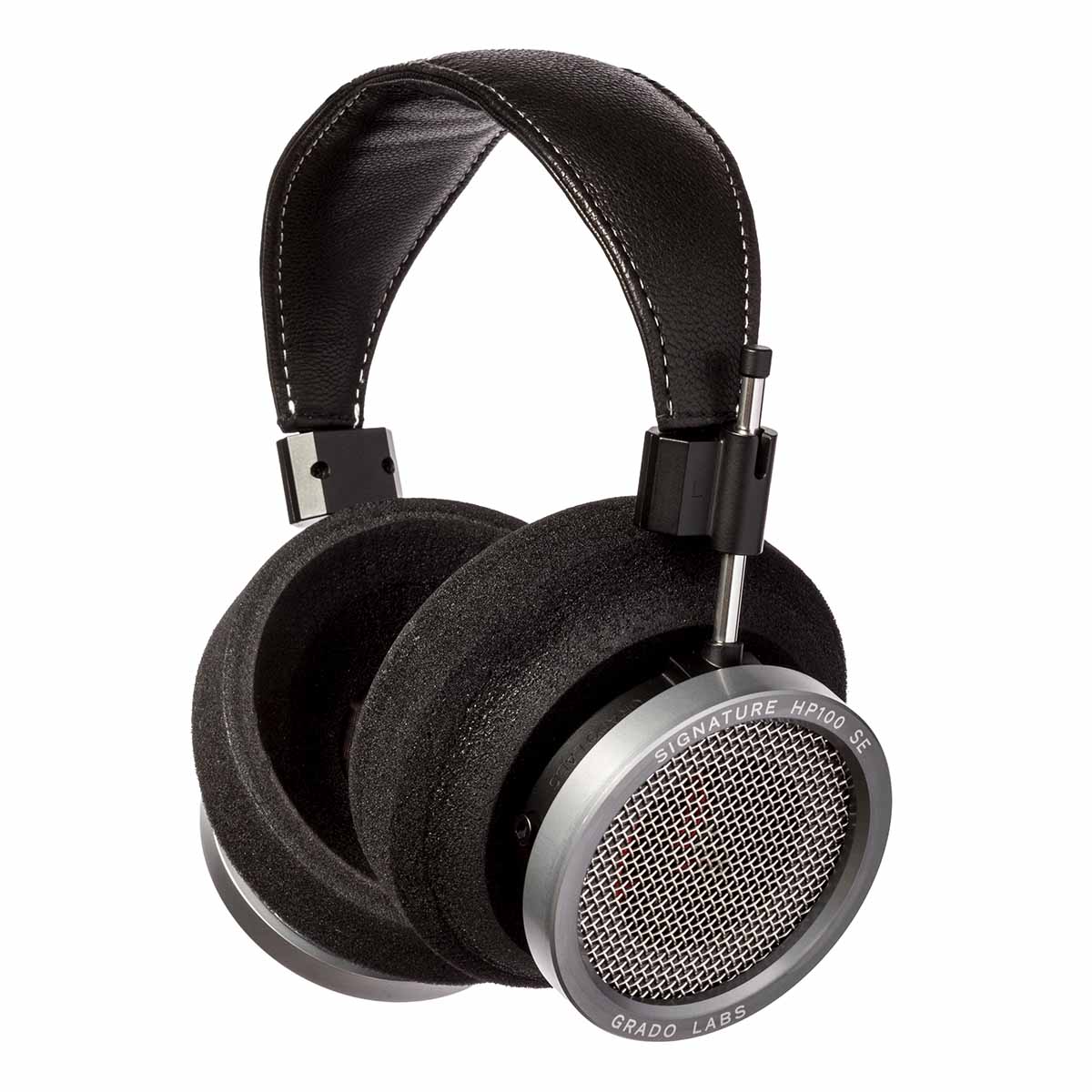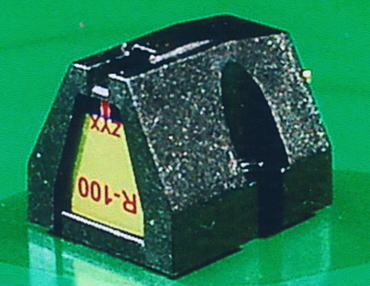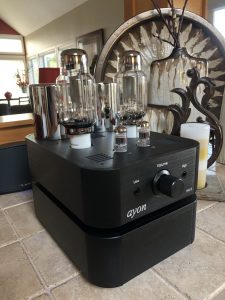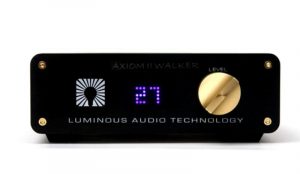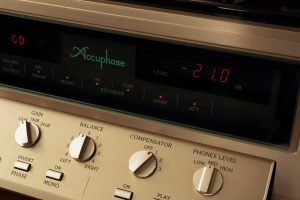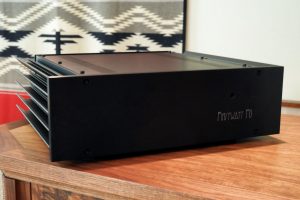This article, by Dr. John Coletti, originally ran when Positive Feedback was in print - Vol. 8, No. 1, 1999.
As a teaching exercise, the student of criticism might be assigned the task of comparing or contrasting the work of one author, artist, or composer to that of another. The object of the lesson encourages a deeper insight into the compared works which ultimately leads to a more profound understanding or appreciation by the individual student. In doing so, the student's aesthetic boundaries are expanded as well as his taste which leads to preference. Such a comparison neither enhances nor detracts from the intrinsic value of the particular works examined by this process; as each work is unique and stands on its own merit. We, as listeners, are involved in listening to live music as well as recorded music, and then not only to the music per se, but often the audio gear itself. It is by this experience that we each develop tastes which enable us to appreciate an artistic effort individually, often differently from other listeners.
If one accepts the premise that the actual reproduction of music is an art form, separate and distinct from the musical content itself; then it becomes apparent that there is a large group of artisans or artists who are involved in the process of recapturing the sound of music, particularly live acoustical music (not to negate this effort as it involves electronic music where composition and playback are sometimes a continuum). In this way the reader is asked to consider the recording of music as an art form. Similarly the process of playback of recorded music for the ear of the listener, the audience, is also an art form which in itself might be considered a separate performance. At a concert, the musician transposes the content of a written musical score to an acoustical event. For the listener at home, it is the audio gear which functions as the performer, in a sense, transposing the recorded experience into a musical event. Hopefully the analogy is not strained by suggesting that the skills involved in this effort include a technology and an understanding of acoustics and materials no different from that involved in the creation of a musical instrument dedicated to the purpose of transposing the written score of the composer to the ear of the listener via a performer. Some examples might include the effort of the luthier, the harpsichord, or piano maker, as well as those who design and construct state of the art audio play back systems for the listener-consumer audience.
This preface serves to introduce my topic: state of the art audio equipment as involved in the listening experience, an art form unto itself. By this I mean equipment or instruments which are technologically sound, creatively designed, meticulously crafted and capable of evoking in the listener the emotional and aesthetic response which he might experience in a live concert. Equipment of this genre engages the listener emotionally (yes, it is about endorphins) to the degree that he (she, is understood equally in all personal pronoun references) becomes part of the musical experience itself. This is truly the end for which audio gear is or should be created and the degree to which it succeeds in accomplishing this defines its own merit. Where it succeeds in the fulfillment of this goal, it becomes "state of the art." In the case of some equipment such as the Quad ESL, Rogers LS35A, the Linn LP 12, equipment is able to retain this status for a generation or more in spite of technical advances because it embodies an aesthetic quality which by comparison stands the test of time.
My own recent experience involving two systems allows me to comment critically on the attributes of each in this regard. In doing so, however, I point out that while I make comparisons, my purpose is not to state a preference or suggest that one system is superior to the other. Indeed, had I the opportunity to have listened to more systems and had space and time allowed, I would be able to present a more exhaustive review. These two, however, do stand up in the minds of many audiophiles as representative of that group of audio equipment which is considered state of the art. To suggest that one is superior to the other is the task of the listener, you the reader. The equipment and associated comments are commended for your own critical analysis for you are as capable as I in this exercise.
The Listening Environment
This remained a constant except speaker cabling which was chosen for an audible synergism with a particular amplifier-preamplifier-speaker combination. The speakers used were the latest version of the ESP Concert Grand capable of wide range frequency as well as exceptional transient response and dynamic range. Other speakers might have been chosen, but as I am very familiar with this particular speaker, it remained a constant eliminating an unnecessary variable for the purpose of comparison of the amplifier-preamplifier combinations auditioned.
The speakers were placed in a large rectangular dedicated listening room, with a distance of ten feet from the rear wall, away from the side walls, separated by eight feet, and approximately nine feet from the center listening position. ASC Tube Traps provided acoustical treatment for the listening environment, to which current is supplied via a dedicated, optimally phased 30-amp line. The Levison 31 and 30.5 and a Well Tempered Reference table and arm with a Benz H20 and A.R.PH3 sourced the front end, utilizing appropriate isolation techniques. ESP bi-wire and top of the line bi-wire Aural Symphonics speaker cabling was chosen. Aural Symphonics top end interconnect and digital cabling were employed in this system as well.
The Equipment (amplifier and preamplifier combination)
conrad-johnson
The Premier 8a stands on its own merit as an example of outstanding audio amplifier design and construction. I have enjoyed countless hours of listening through it for several years; changes in speakers, cabling, and upstream sources not withstanding. A pair of Quicksilver preamps (N.O.S. tubes) used each for a single channel paired well with this amplifier as a rather musical and dynamic partner exhibiting relative immunity to RFI, which is a problem in my area. The Premier 14 preamp, however, which I reviewed in a previous issue of Positive Feedback, produced greater dynamics, had a more realistic bass line, and spoke with more musical authority than the Quicksilver pair. Though it is more sensitive to RFI than the Quicks, it is a logical partner for the 8a. By now I have little doubt that the c-jART would push the envelope considerably. Similarly, the c-j15, which was not available at the time of listening, might well have found a welcome home in the front end set up as well. The Audio Research Reference One preamp spent time in my system, mated to the 8a's allowing for an extended period of listening. While insensitive to RFI and capable of an excellent musical and wide range response, it did not share quite the dynamic impact with the 8a's as did the c-j 14.
This says more to me about system synergy than components. The Reference One reached a new height when logically mated with the Reference 600 amps, a combination which engaged my attention for several months. Somehow I wonder if both we (the listener) and they (the audio supplier or dealer) subvert the component designer's effort when we mix and match gear, rather than construct a system of components built by the same manufacturer, which seemingly would add some synergy if there is an inherent sonic (read: "artistic") goal in its design. I am convinced after decades of critical listening that this is most often the case, and where the opportunity for component synergy presents itself, it should be seized. The greatest support of this theory is the subject of another and more focused forthcoming review, that of the NAIM equipment.
Using the 14 and 8a combo begs a question. Is there a c-j sound? Yes, in fact there is, and it is a glorious one. The musical statement is dynamic, slightly Rubenesque, with body and warmth; shying from any loss of detail, however. When compared to the Audio Research Reference One and Reference 600 combo, it has a very slight upper bass fullness or conversely, the ARC match is slightly leaner in this area. The c-j sound is thoroughly musical, involving, and unfatiguing in the same way as is the live event. Spatial qualities such as those heard in solo female voice, chamber ensemble, or with a large orchestra, are neither artificial nor exaggerated.
As an audiophile I would be remiss in discounting my fascination, and perhaps that of my peers, with both the visual and tactile appearance of audio gear. There is a visual aesthetic to the champagne tone metal work and not least, the many glowing tubes. And while there may be a certain musical warmth to the sound of c-j, after a few hours of listening the tube component produced a thermal warmth in the room itself. Often I found myself turning off the furnace in the winter months, when listening to the c-j combo, as the gear itself was a suitable means of heating my listening room. The Audio Research amp, however, was remarkable with its cadre of 6550's and for my listening experience with this set up, in addition to shutting off the heat as I did with the c-j's, I donned my cut offs.
The c-j combination is faultless. The factory support from c-j is the best I have ever experienced. In three years, one amp returned home to Virginia only to be returned in less than two weeks. My digital front end traveled to Connecticut more frequently, but nevertheless served as a worthy companion to the c-j's and remained in my system. The ESP Concert Grands mate perfectly with the c-j combo, as even these efficient behemoths appreciate the power and current delivery of the big c-j tube amp which exercises stunning bass control, but not quite to the degree of the big Krell FPB 600 which I auditioned on the system. Certainly this stereo amp delivered an extraordinary sound, and to some degree points out that the sonic disparity between tube and solid state devices is certainly diminishing. It is quite an extraordinary effort, mentioned here only in the context of its remarkable bass line.
There is, however, something to be said for the c-j "tube bass," which exhibits a real life attack and decay and in a sense an acoustic nuance which transcends the whoosh/push sock of the biggest solid state amps. I have yet to hear a full-range dynamic speaker which, when partnered with one of the monster solid state amps, does not exhibit such bass impact which I find wanting at a live concert. This does not discount, however, the excellence of the Krell effort, which has more immediacy and impact in the low end than either the c-j or the ARC amps.
The search for "true bass" remains an open ended aesthetic question for the audiophile. There are listeners who treasure musicality, as they perceive it, more than they appreciate an isolated portion of the frequency spectrum. There are those who value transparency or even transient response as the goal to be attained. There are others who value the mid range, where most of the musical information lies, above any other issue, and they speak as loudly for their cause as those who as a matter of preference and taste search for the perfect bass. Each of us has an established sonic ideal for which we search in our equipment. Perhaps this search for the "ideal" represents in itself a valid aesthetic, not only as an exercise for the listener, but for the designer and maker of high end audio gear as well. It is the latter's effort in this regard which advances the art form.
Audio Research Corporation
Both the Reference One preamp and Reference 600 amps resided in my system for several months. I also had occasion to vertically bi-amp the ESP Grands with two ARC VT 100 stereo amps with the Reference One preamp. The latter pairing was so good (I have not heard the VT 200) that one has to consider "cost as no object" in order to justify the Reference 600 as the amp of choice. This reasoning, absent cost consideration, could be extended further in another direction; a possible pairing of the speakers with four Reference 600 monoblocks, a setup which I have yet to audition.
The ARC system exhibits its own synergy, and though excellent in its presentation, sounded different from the c-j pairing, as might be anticipated. The upper bass is leaner than the c-j to the degree that I removed a pair of A.S.C. bass traps from the rear of my listening room. In doing so I either compensated for the c-j's bloom or the A.R.'s leanness. I am not certain which is the case, but regard this issue as a criticism of neither, only a function of each designer's own taste as embodied in his effort.
Music is a time art form as opposed to the space art form embodied in graphic expression. As such, silence is an effective point of musical expression; e.g., the "rest" in a written score. ARC has mastered the art of achieving quiet, for this gear is just that. Perhaps this attribute contributes to the dramatic dynamic quality of the 600's which easily excels that of any amplifier I have auditioned in either this or any other set up. The ARC combo is truly startling, both in terms of micro- and macro-dynamic quality. It invites an increase of sound level beyond that normally utilized, due to a sense of unlimited gain which produced neither compression nor any diminution of quality. What an expansive sensory experience!
Perceived bass extension was greater than with the c-j, with no loss of detail. The mid range was balanced and slightly more "neutral," but at the same time less "inviting" than the c-j; slightly reduced in width, but increased in depth over the c-j. Focus is dead-on, and the human voice has never sounded better in my room. Large orchestral works, such as those of Mahler, shone with the Reference pair. These amps are huge, and produce an equivalent sound stage. They are transparent in the most real sense, and are difficult to fault except to say that they are very heavy, requiring two strong lifters for transport.
One amp unfortunately developed a problem which the dealer could not correct in the field, and was ultimately returned with its mate to the manufacturer. Thus was cut short my listening to the Reference system, which clearly is a state of the art effort. Similarly, its designer and the artisans who have produced it, have made a great contribution to the listening art. The Reference pair is a mature effort of the artist himself. It may well be destined to join the ranks of the classics.
The Courage of One's Own Preferences
My experience in auditioning this array of gear has afforded me an opportunity to appreciate one take on the "art of the tube" — not the single ended interpretation, but that of the current mega-watt push/pull effort. The question might be asked as to whether I had a preference for either the c-j or the ARC approach. Indeed I have one, but it has been formed as a result of appreciating the attributes of each artistic effort. I invite the thoughtful reader to form his own conclusions after listening, as I did.
A reviewer is not as able to validly address the issue of taste and preference of the reader-listener as he himself is, and for this reason most audio reviews should be taken carefully in context. Ultimately it is not the reviewer who will listen to the equipment in the listener's home, but the listener. The listening environment should not be discounted as part of the musical system itself, and for this reason the sound of a specific piece of equipment may vary significantly as a function of this issue. The consumer must be satisfied that he has made an appropriate choice of equipment based on his own taste, dictated by whatever aesthetic context he has been able to frame for critical listening.
Most of us who visit an art museum linger to appreciate each work. Though each of us may have a preference, it is usually not expressed in the context of considering one artist as being "better" than another. Is Matisse better than Chagall; is Renoir superior to Monet? The program of a particular concert may contain works of many composers, and as such generally is appreciated by the listening audience. While a listener may prefer Chopin over Schubert or perhaps Beethoven over Mozart, his taste does not diminish the artistic merit of another composer's work.
So it is with high-end audio. There is a wealth of excellent compatible audio equipment, some not even of recent design or manufacture, which may suit our individual preference of playback equipment used in recreating a recorded performance. As the quality and merit of gear changes in time, so does the taste of the listener. Indeed, I am not certain that one does not drive the other.
When the author of a published review reveals his preference in audio gear, it need not be that of the reader, who is equally able to form his own valid conclusions in this regard, based on comparison and preference and guided by his particular aesthetic sense. There are many paths in the pursuit of audio that might lead to satisfaction, but for a particular listener there may be only one, and irrespective of the taste of others, this is the road he is entitled — if not compelled — to follow.





